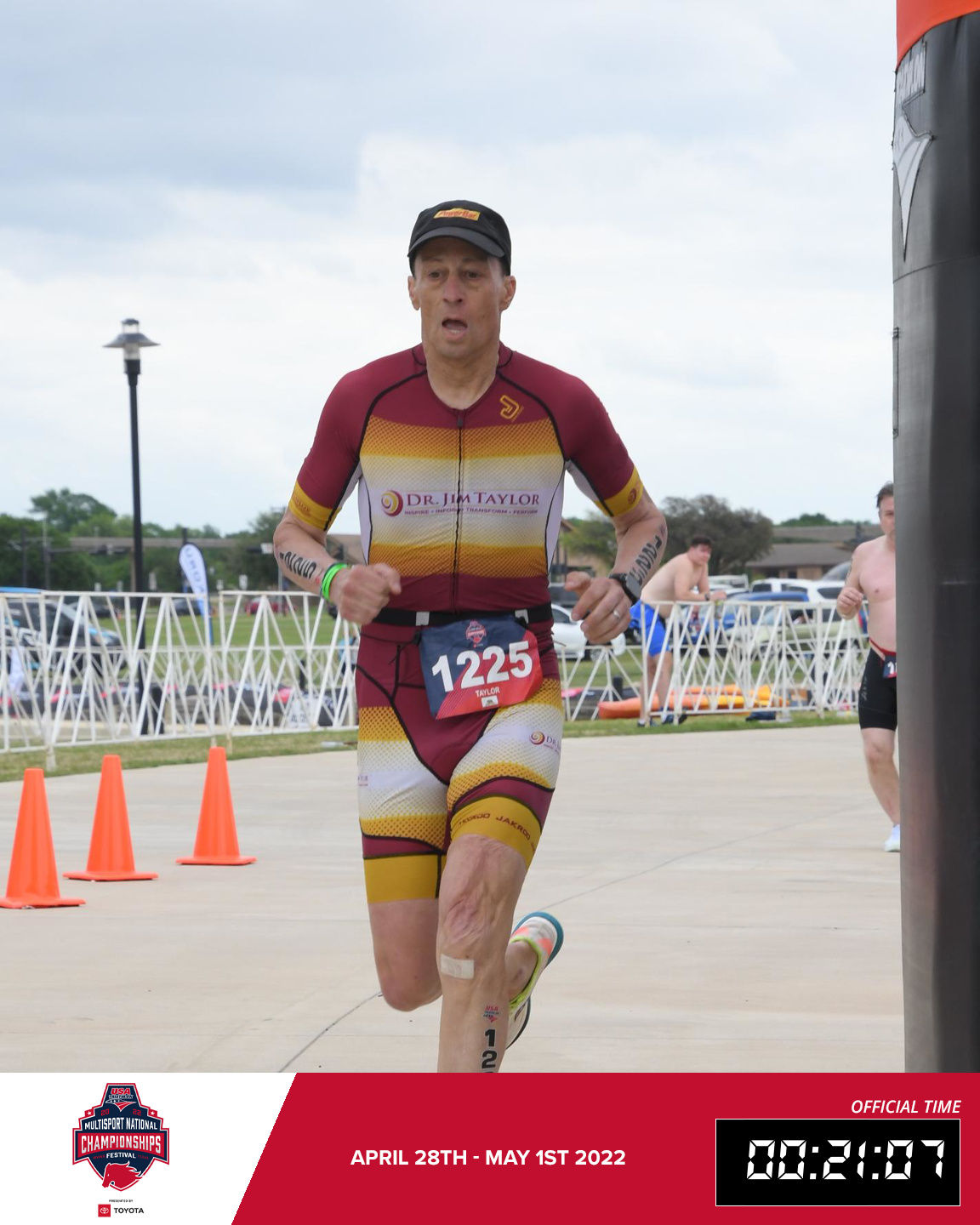As I indicated in my last segment of “I Practice What I Preach,” you definitely want to listen to your body when it’s sending messages of injury to you. Moreover, you want to listen when your body is whispering, so you don’t have to listen to it when it’s screaming at you (then it’s too late).
 At the same time, paradoxically, there are times when you actually don’t want to listen to your body. Why, you ask? Because the messages your body sends to you hold you back and limit your ability to make meaningful gains in your fitness and race readiness. Let me explain.
At the same time, paradoxically, there are times when you actually don’t want to listen to your body. Why, you ask? Because the messages your body sends to you hold you back and limit your ability to make meaningful gains in your fitness and race readiness. Let me explain.
Through our evolution as human beings, in fact from the time when our simplest ancestors crawled out of the primordial muck billions of years ago, we have learned that any form of physical discomfort is bad and to be avoided. This reaction to physical exertion and pain evolved because, for example, on the Serengeti 250,000 years ago, when we first officially became Homo Sapiens, if our ancestors experienced pain, death was likely to follow. In sum, when our bodies experienced pain, it sent messages to us to stop because our bodies believed that we were going to die. This survival mechanism worked beautifully back then, but it doesn’t work so well in 2023 endurance sports.
death was likely to follow. In sum, when our bodies experienced pain, it sent messages to us to stop because our bodies believed that we were going to die. This survival mechanism worked beautifully back then, but it doesn’t work so well in 2023 endurance sports.
The very nature of endurance sports is that the only way we will get stronger and faster, and be capable of swimming, biking, running, rowing, cross-country skiing, or what-have-you harder, was to expose our bodies to greater levels of volume and intensity that are very uncomfortable. The problem is that our bodies don’t know the difference between what our forbearers experienced eons ago and what we experience in our training and race efforts. Our bodies feel pain and they instinctively want to ease up or stop.
 Every endurance athlete hears those messages and knows how incredibly difficult they are to resist. Over the last few years, I’ve been scouring the research and testing various tools to see how I can push back against those powerful messages and how I can help my clients and others do the same.
Every endurance athlete hears those messages and knows how incredibly difficult they are to resist. Over the last few years, I’ve been scouring the research and testing various tools to see how I can push back against those powerful messages and how I can help my clients and others do the same.
Our primitive brain sends messages to our body telling it to slow down or stop to protect itself from what it believes will be death if the exertion or pain continues. Though this explanation for why we slow down during an endurance event is still controversial in the field of exercise physiology, I have accepted it as the least bad explanation until something better comes along. It also makes intuitive sense to me and offers a lot of practical tools we can do to mitigate that instinctual urge to back off when we hurt.
least bad explanation until something better comes along. It also makes intuitive sense to me and offers a lot of practical tools we can do to mitigate that instinctual urge to back off when we hurt.
What this means is that when you think you’re done, you’re not nearly done; there is actually plenty of fuel in your “gas tank.” Your primitive brain just doesn’t you to deplete your fuel tank too far, lest you risk death. So, it tells your body to slow down or stop before it thinks you’re going to die (even though this outcome is very unlikely).
 As a workout or race progresses, your body starts to fatigue and hurt with increasing intensity. As I discussed in my last article, the messages begin with a whisper and steadily increase until your body is screaming at you to stop. If you’re really injured, then, yes, you want to listen and stop before you incur severe and long-lasting injury. The problem is that your body has a hard time differentiating between injury pain, which is an important warning signal, and exertion pain, which is part and parcel to being an endurance athlete. If you always listened to your body’s messages to stop, you would never gain fitness or achieve your competitive goals.
As a workout or race progresses, your body starts to fatigue and hurt with increasing intensity. As I discussed in my last article, the messages begin with a whisper and steadily increase until your body is screaming at you to stop. If you’re really injured, then, yes, you want to listen and stop before you incur severe and long-lasting injury. The problem is that your body has a hard time differentiating between injury pain, which is an important warning signal, and exertion pain, which is part and parcel to being an endurance athlete. If you always listened to your body’s messages to stop, you would never gain fitness or achieve your competitive goals.
Your body’s messages telling you to slow down or stop when you are pushing yourself physically come from your primitive brain that is driven by the survival instinct. This instinct is incredibly powerful, having been honed with great success over billions of years of evolution.
from your primitive brain that is driven by the survival instinct. This instinct is incredibly powerful, having been honed with great success over billions of years of evolution.
Thankfully, over the course of our evolution, we have developed our modern brain that includes our cerebral cortex and, more specifically, our pre-frontal cortex (PFC), both of which separate us from animals. Our PFC is associated with what is called “executive functioning,” which gives us the ability to plan, focus, consider options, engage in self-control, and, very importantly, to make deliberate choices in how we respond to ourselves and our world. The way to resist that instinctual survival urge requires you to marshal the considerable resources that your PFC brings to bear.
As I experimented with ways to overcome (or at least quiet) my body’s messages, I discovered two key steps that lie at the heart of exerting your PFC over those messages. First, we have to make a conscious choice to push against what our body is telling us. This deliberate process reroutes your experience of  discomfort away from our limbic system (which is associated with survival and emotions) and into our PFC, thus reducing the impact of our primitive reactions. Second, by engaging our PFC, we communicate our bodies that we are in control, thereby telling our bodies that our survival isn’t threatened. In doing so, our bodies stop sending signals to slow down or stop because it no longer perceives that we are going to die.
discomfort away from our limbic system (which is associated with survival and emotions) and into our PFC, thus reducing the impact of our primitive reactions. Second, by engaging our PFC, we communicate our bodies that we are in control, thereby telling our bodies that our survival isn’t threatened. In doing so, our bodies stop sending signals to slow down or stop because it no longer perceives that we are going to die.
Second, we can’t just decide to engage our PFC in the moment when our bodies start to scream at us to stop. In the heat of an intense workout or a race, we simply don’t have the wherewithal to step back from the discomfort, consider our options, and make a deliberate decision in the moment. Instead, for our PFC to do its “magic,” we need to have a plan in place, have chosen our mental tools, and practiced them in training, so the response to the training or race effort or exertion pain is ingrained and emerges automatically when we cross that line of pushing ourselves.
to do its “magic,” we need to have a plan in place, have chosen our mental tools, and practiced them in training, so the response to the training or race effort or exertion pain is ingrained and emerges automatically when we cross that line of pushing ourselves.
I now want you to catalog the specific mental tools you use to resist your body’s call to quit when you’re hurting. In my next segment of “I Practice What I Preach,” I’ll introduce you to the mental tools that  research, my work with some of the best triathletes in the world, and my own triathlon experience have shown to be effective in helping to quiet our bodies’ voice as we continue to push our physical and mental limits.
research, my work with some of the best triathletes in the world, and my own triathlon experience have shown to be effective in helping to quiet our bodies’ voice as we continue to push our physical and mental limits.







